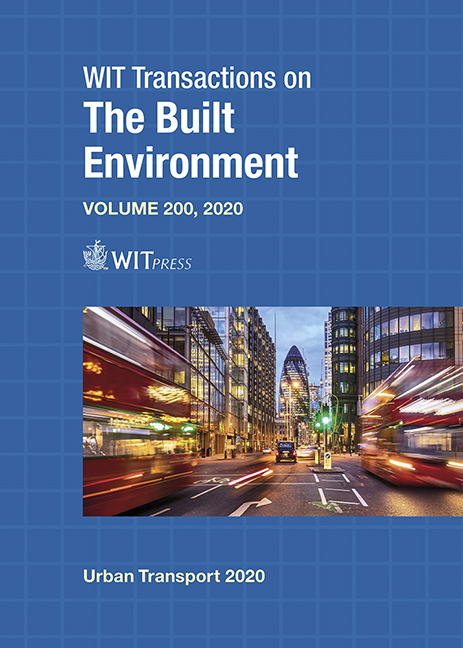SIMULATION OF TRANSPORT OPERATION IN URBAN CONDITIONS WITH VARIABLE VIRTUAL TIME INCREMENTS IN THE PROGRAM STAMM 4.1
Price
Free (open access)
Transaction
Volume
200
Pages
8
Page Range
185 - 192
Published
2020
Paper DOI
10.2495/UT200151
Copyright
WIT Press
Author(s)
ALEXANDER MANYASHIN
Abstract
When studying the operating modes of a vehicle in urban conditions, it is necessary to take into account the peculiarities of changing some of its parameters over time, such as the speed or speed of rotation of the drive shaft of the power plant. There is a cyclical change in these indicators, and the type of cycles depends on the duration of the period of operation. You can identify typical cycles of changes in the above parameters that are typical for a work shift, calendar week, month, and so on. Within all the considered cycles, the periods of “fading” of parameter values are repeated. These features must be taken into account when reproducing the performance indicators of rolling stock in simulation models. The purpose of this work is to take into account the peculiarities of transport operating cycles when simulating its performance indicators. The Stamm program developed by the author uses two approaches for simulation of dynamic processes or systems. The first is using spreadsheets like Microsoft Excel that allows cross-referencing between cells, and the second is using visual object models. Both of these approaches allow us to take into account the features of operational cycles of transport by dynamically changing the value of the modelling step during the simulation experiment. When using a table model, this is a special cell for synchronizing the model time step. In the second case, the algorithm for changing the step of virtual model time is implemented using logical expressions in special components of system dynamics models – “Formula” The proposed approach significantly reduces the time of experimental research without losing the accuracy of the simulation model.
Keywords
operating cycle of a vehicle, urban traffic conditions, simulation modelling





